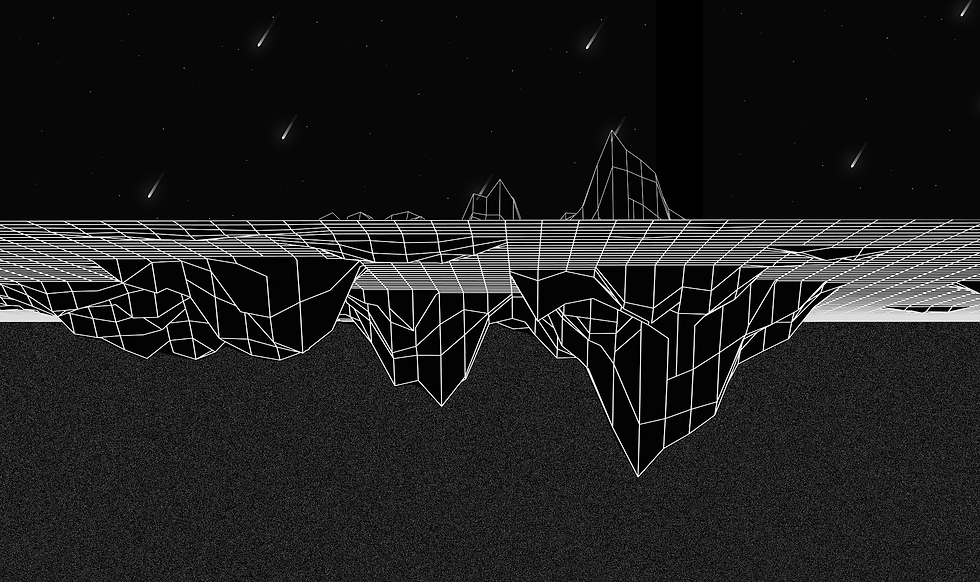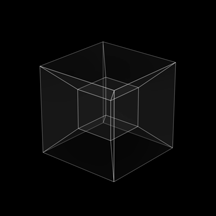Chamber of Personas: Digital Distortions Reshaping Reality
- Karo Duro
- 3 days ago
- 6 min read
Updated: 3 days ago

In a world driven by data, where do we draw the line between reality and fiction?
For many of us, a large portion of our lives unfolds online, captured in the various devices and applications we use daily. Across the digital realm lie snippets of who we are; collective data rich with extractable elements of our essence (both structured and unstructured). This well of our personal information is actively being mined to shape the future of society from the political ideologies that prevail, to the products that perpetually make profit off of us.
Social media platforms like Instagram and TikTok are a prime fusion of this. These intangible products have shaped trends and thoughts across generations, amassing vast amounts of data that form a behavioral marketplace. In this marketplace, each user is both the product and the consumer. The more you use, the more of your usage data is harvested, the more “you” or aspects of you are both sold and sold to.

Through constant exposure to these algorithms coupled with dopamine-fueled engagement tactics, our collective psyche is gradually being morphed. This has lead to a homogeneity of thought, cognitive-behavioral changes, and the proliferation of subcultural echo chambers.
Some users often refer to the Algorithm as godlike, personifying it and praying it rewards and blesses them for appeasing it. From time to time, I will refer to the “Algorithm” in a noun form, in order to adequately convey the concepts being expressed. It is important to note there are various types of algorithms in use across these social platforms that are utilized to fuel engagement by capturing and learning from our interaction data.
The Algorithm Does Not Know Nuance
An algorithm is a process or set of rules to be followed in calculations or other problem-solving operations by a computer.
As we engage with digital platforms daily, in return, their algorithms analyze our actions, tracking our interactions, profiling us to construct models of who we are. These data points are used in training algorithms that learn to recognize our patterns and preferences, ultimately refining their “understanding” of us over time.
However, the Algorithm’s understanding of our identities is paradoxical. The data that has been captured while we use these applications cannot fully encompass the complexities of our human experience. Though the process is invasive, the data that is harvested is limited because we humans are extremely nuanced in our behavior and even down to our use of language. We think about thinking, we go to sleep at night and we dream, and though we have our patterns, we can behave unpredictably. These nuanced aspects of our lives create gaps in the data, and the Algorithm's perception of who we are.

The Algorithm doesn’t grow old with us, it doesn’t console us when we cry, or meet us in our dreams...
These algorithmic representations tend to strip away personal complexity and context, whittling us down to mere numerical shells of ourselves that can easily be categorized and marketed to. Therefore, when we allow these platforms to drive our decisions and have influence on our identity and self-expression, we may begin to perpetuate a rigid sense of perception that is housed within these algorithms.
Algorithmic Archetypes
Where do I end and the online persona begin?
Like a hook on a fishing pole, certain things draw us in, maybe because they speak to a certain aspect of us that may be underrepresented or misunderstood. Once entrenched in a particular bubble you may only see commentary that validates and affirms those beliefs. This is because algorithms are rigid. How a person truly is vs. how they are perceived by the algorithm may differ drastically meaning stereotypes and tropes can be easily baked in due to over simplification and categorization.
These days, the moment you speak of a product, it seemingly appears across your feed, sometimes it may have even been a passing thought, and all of a sudden, you log on and there’s a post, advertising that item. This illustrates how closely our interactions are instantaneously being processed and monitored, blurring the line is between our personal preferences and what the algorithm has remodeled them to be.
In times like this, we need to question the authenticity of our preferences. Who are we without these algorithms?
What we see not only influences our interactions in the digital space but also bleeds into our ideologies in the "real world". Because the Algorithm's objective purpose is to keep you perpetually engaged, it will prioritize the promotion of content that reliably elicits strong reactions (e.g., outrage, excitement, or fear) As you continue to interact with the same content, it learns you and feeds you more of the same topics. Over time, this creates a bubble that isolates many of us within our own digital echo chambers, unable to distinguish between our own preferences and what these algorithms have molded them to be. We also detrimentally submit ourselves to these algorithmic anchors when we place too much weight on what we post and how we will be perceived.
Even though, regardless of social media and digital consumption, the echo chamber is an phenomena that has long existed in society. Echo chambers emerge anywhere information is being exchanged whether it’s online or in the real world; Historically the Catholic church functioned as its own echo chamber where all information disseminated passed through its jurisdiction, and those who challenged them were accused of heresy, and even put to death. The evolution of mass media like television and radio stations allowed the public to tune in or tune out through the increase of options available.

The internet has given birth to an array of subcultures that are easily accessible and overtly relatable as they present a simplified two-dimensional view on social ideals, identity, and self-image. Today, the issue lies in how these ideological distortions birth from the internet are now permeating into physical reality and warping mainstream perspectives.
Self Fulfilling Prophecies
Beyond the echo chambers that exist across social media is a deeper phenomenon: the algorithm itself functions as a self-reinforcing echo-chamber. The algorithm is learning from the data it is shaping, basically getting high off its own supply.
Algorithm Ossification refers to the decision-making patterns within the algorithm that become increasingly rigid and inflexible over time, unable to adapt to changing circumstances.
As we interact online, we often indirectly validate the algorithm's limited assumptions about us from subtle behaviors like how long we linger on certain content before scrolling away. There is power in what we interact with and how we do so. Gradually, we have begun to modify our behavior to align with what the algorithm "rewards," since that approach appears to be most effective. Initially, we taught these algorithms our likes and preferences, but over time they began influencing us back creating a feedback loop. In this loop, we unintentionally reinforce the algorithm’s assumptions about us. This creates a cycle where our decisions are being shaped by the algorithm's predictions, which in turn shapes the data the algorithm collects, perpetuating the cycle. The algorithm's understanding of human behavior becomes a self-fulfilling prophecy.

What we're witnessing isn't simply user preference; it's a manufactured behavior pattern created by the algorithm's influence and our adaptation to it.
For instance, Instagram and TikTok have augmented how artists across disciplines express and promote themselves. On one hand, these algorithms have introduced users to communities for support and connection, cultivating spaces for innovation, increasing the reach of many art forms to a wider audience. On the other hand, the prevalence of short form content has left many artists feeling the pressure and plight of having to conform to the Algorithm, and feel compelled to resort to simplified, quick-hitting content because supposedly "that's what people want." However, this perceived preference isn't natural - it's the result of conditioning. Essentially, It is what has been accepted, digested, and affirmed back. What we're witnessing isn't simply user preference; it's a manufactured behavior pattern created by the algorithm's influence and our adaptation to it. From the shortening attention spans, to addiction-like behavior, we have undergone a collective rewiring of social behavior on a cognitive level, an infinite cycle that ceases to be broken.

In essence, we're experiencing a collective rebirth where our human experience is being distorted by interactions and distractions in the digital space. The Algorithm doesn't truly know us—it knows a numerical shell projected back to us. Yet we adapt, conform, and ultimately allow these interactions to become central to our identity. Unless we become aware, we take part in our collective re-programming fueled by for-profit platforms.
In a world driven by data, where do we draw the line between reality and fiction?

Karo Duro
Artist, Technologist, Creative Director
What else have I been up to?















Kommentare